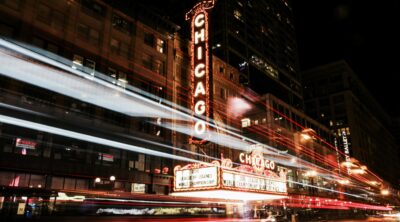< Back to all posts
10 Tips for Shooting Video in Europe
Crews Control has been managing video productions worldwide in Europe for 20 years. Over that time we have gained a lot of video production experience and have collected some funny stories along the way. We worked with our Crews Control represented Directors of Photography from all over Europe to compile our Top 10 List.
TEN: Flicker. The technical tip that was mentioned more than any other was correct frame rates. “Why is the b-roll footage of the factory flickering?” If is important to note that European countries are PAL. You may say “why does that matter for an HD, 2K, or 4K shoot? It’s all about the Hertz baby. European countries main frequency is 50 Hz so the native frame rates that correspond are 50 or 25 fps. America line frequency is 60 Hz so our corresponding frame rates are 23.98, 24, 29.97, 30, 59.94, and 60fps. Most high definition and digital cinema cameras are capable of shooting all the frame rates above. It is important to have a conversation with the local crew to discuss locations and if the frame rate needs to be changed accordingly.
Here is an extremely concise answer and solution from Steve Mahrer, Senior Technologist from Panasonic North America. “ Shooting with any camera in a “non” native frame rate environment is not uncommon, this is especially true of 24p “film” style shooting, or if for example a US news crew is shooting in Europe or vice versa. As you cannot change Video Format, to stop flicker or strobing, it is necessary to use the camera’s Synchroscan shutter (fine shutter) to null out any strobing caused by the local lighting power frequency.
The basic formula is simple, TV frame rate divided by the Power frequency x 360 = required shutter angle. For example, in the US, if a camera is being shot at 24fps, and the lighting is 60Hz, the shutter angle is calculated as 24 / 60.00 x 360 = 144 degrees.
• If a US camera (running at 1080i 29.97) is being used in London where the power is 50Hz, the shutter is adjusted to 215.8 degrees to stop flicker.
• If an EU crew is shooting 1080 25p in New York, they will set the shutter to 25/60 x 360 = 150 degrees.
Troubles may arise if the lighting is of many different frequencies, e.g. AC power and HMI film slights, also some of the new LED lighting use PWM to change the brightness… this may cause flicker! If you’re in a tough position and still see flicker, simply adjust the Synchroscan shutter SLOWLY and look at an WFM, adjust until the flicker is minimized.”
NINE: Siesta. If you are planning to pick up a hard drive or XQD card in the European south at 3PM you probably will not get very far. Shops are closed for siesta from 2:30PM – 5:30PM during the work week. Stores tend to have abbreviated hours on the weekend as well, they close at 3PM on Saturday and don’t open again until Monday morning.
EIGHT: Mileage. The average cost of gas in the EU is $8/ gallon. It is good to be mindful of travel distance to and from a location as well as during the shoot to capture b-roll of landmarks.
SEVEN: Congestion charge. Cities like London and Stockholm have congestion taxes. This is a fee that vehicles are charged to drive into a city to reduce overcrowding and pollution. Unlike a toll booth the car’s license plates are recognized by cameras and the owner is sent a bill.
SIX: Meal time. I had lunch time described from a European crew once as a “one hour sit down break. Americans tend to understand lunch as a sandwich while we drive to the next location.”
One of our German DP’s shared this entertaining anecdote. “Back in the 80s I shot for a large agricultural outfit from the mid-west. The client lived on a huge farm/ranch there, 100s of acres, which for us Europeans is almost inconceivable because here everything is much smaller. Anyway we were shooting in a one horse town in the back end of nowhere in Germany and it was time for lunch. As always with overseas clients I translated the menu…German stuff like sausages, sauerkraut, pork etc. then I told him there was spaghetti Bolognese on the menu, he looked at me and seriously asked what that was. He had never heard of it! I wasn’t too sure if he was having me on but he was most sincere. I know you have a lot of Italians in the states but I guess their culture hasn’t spread to the mid-west. He went for sausages.”
FIVE: Language Apps. There are many foreign language apps available on iTunes that will help you navigate each European country. All of our DP’s speak English and often translate for Producers on location. It is always appreciated to put forth a little effort, know a couple key phrases in the native language to ease the interviewee.
FOUR: Holidays aren’t just for Americans. It is important to familiarize yourself with local customs that may affect your shoot schedule. It seems like a simple tip but it is important to discuss your chosen date and time with the shoot subject and the crew.
“Surprisingly, people forget that other nations have different holiday schedules and traditions! Find out what days a city is closed for national holidays or even major sporting events. Your shoot might have nothing to do with the event or holiday, but those events can still affect your project. Public transportation may be unavailable and streets and businesses could be closed. This is especially important when you need visas or permits to shoot in public areas. If you need three days to get the permits cleared and your shoot is on a Thursday, then Monday might not be enough time to file if there are national holidays. Even with crew and gear ready to go, you won’t be able to do your shoot unless you’ve requested the necessary paperwork the week prior.” Says Crews Control Production Manager Becky Holzman
THREE: Get permission. Nothing shuts down your video production faster than the police. When shooting in and around landmarks you will need to have permits. Depending on the country and the landmark it may takes weeks to get the paperwork sorted through the correct channels. Where some European countries are hard to get the paperwork in place is seems that Spain isn’t one of them.
“Although Spain is fully integrated in the European Union and between all EU members the Schengen borderless area applies, if it comes to shooting film or video every European country has its’ own rules and customs in terms of permits and what can be done or what not. Spain is one of the easiest countries to shoot in the EU. We do not need any shooting permit to shoot on public spaces with a crew under 8 people and if not using a crane, dolly or any other major grip device. Even if permits are needed they can be organized in less than a week and do not cost much, unless you plan to completely shut down traffic in Madrid’s 5th Ave., Calle Gran Vía, which we have done for a new Toyota TV commercial a few months ago,” says a Crews Control represented DP.
TWO: Passport and other travel information. You will need a valid passport to enter every country in Europe. Don’t glaze over this tip. It is also important to note that many countries require passport validity past your stay. For example if you are going to Demark, Finland, or Greece you will need a valid passport 3 months after the end of your trip to enter the country…check those dates! The U.S. Passport & International Travel website also has other important information like the number of blank pages needed to entry each country, vaccination requirements, currency restrictions, and tourist visa information.
ONE: Don’t get stopped at customs. Visas may be required for Producers to be able to enter into a country and Carnets are for any equipment that the Producer is carrying with them. Of course, we suggest that you keep your luggage light and allow the local crew to supply all of the gear. Sometimes Producers like to carry specific support video production equipment or cameras with them. You must have a carnet for that production gear.
When in Rome, right! Please share your best tips and stories of producing or capturing footage in European countries. Likewise, we would love to hear more from European crews working with American clients.







Leave a Reply